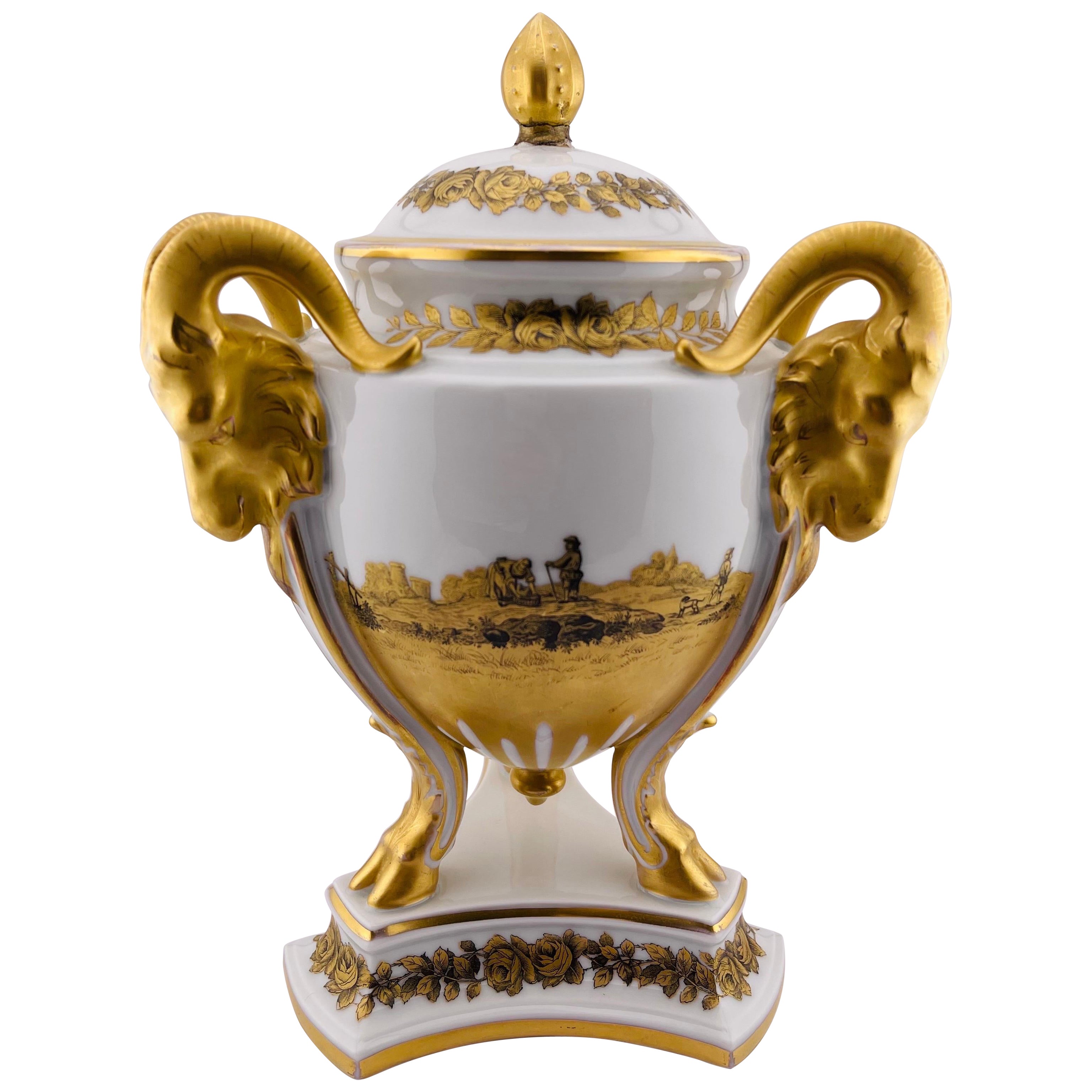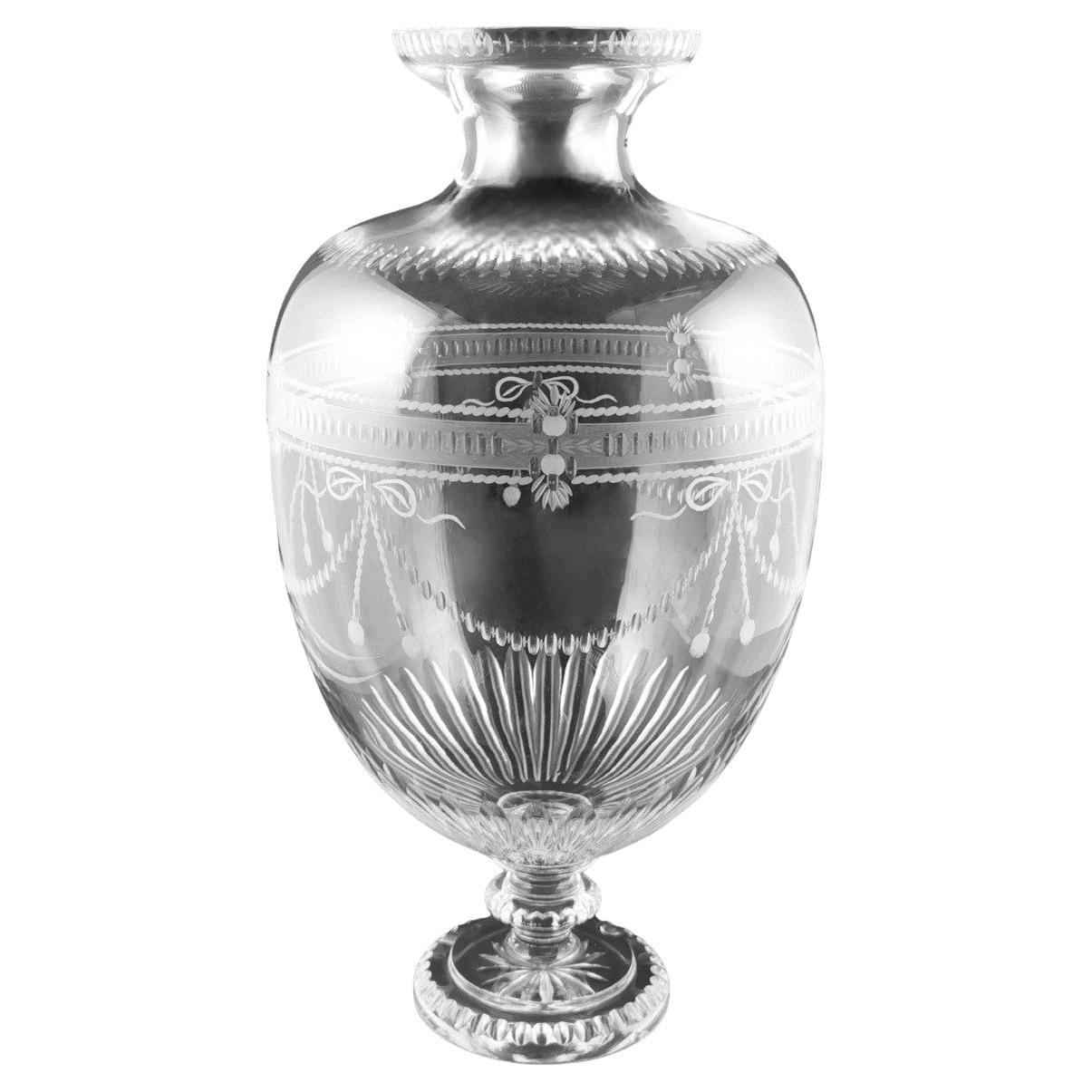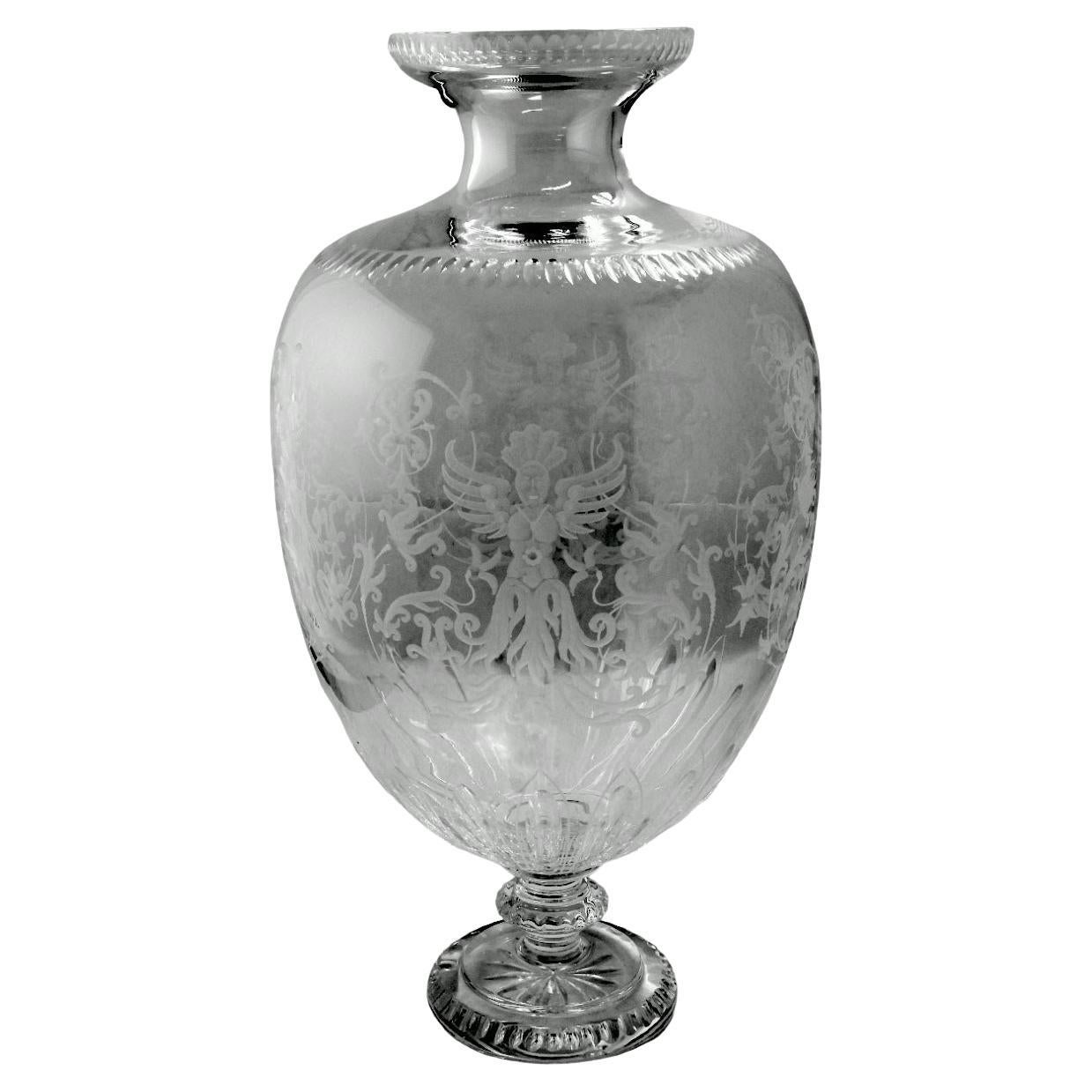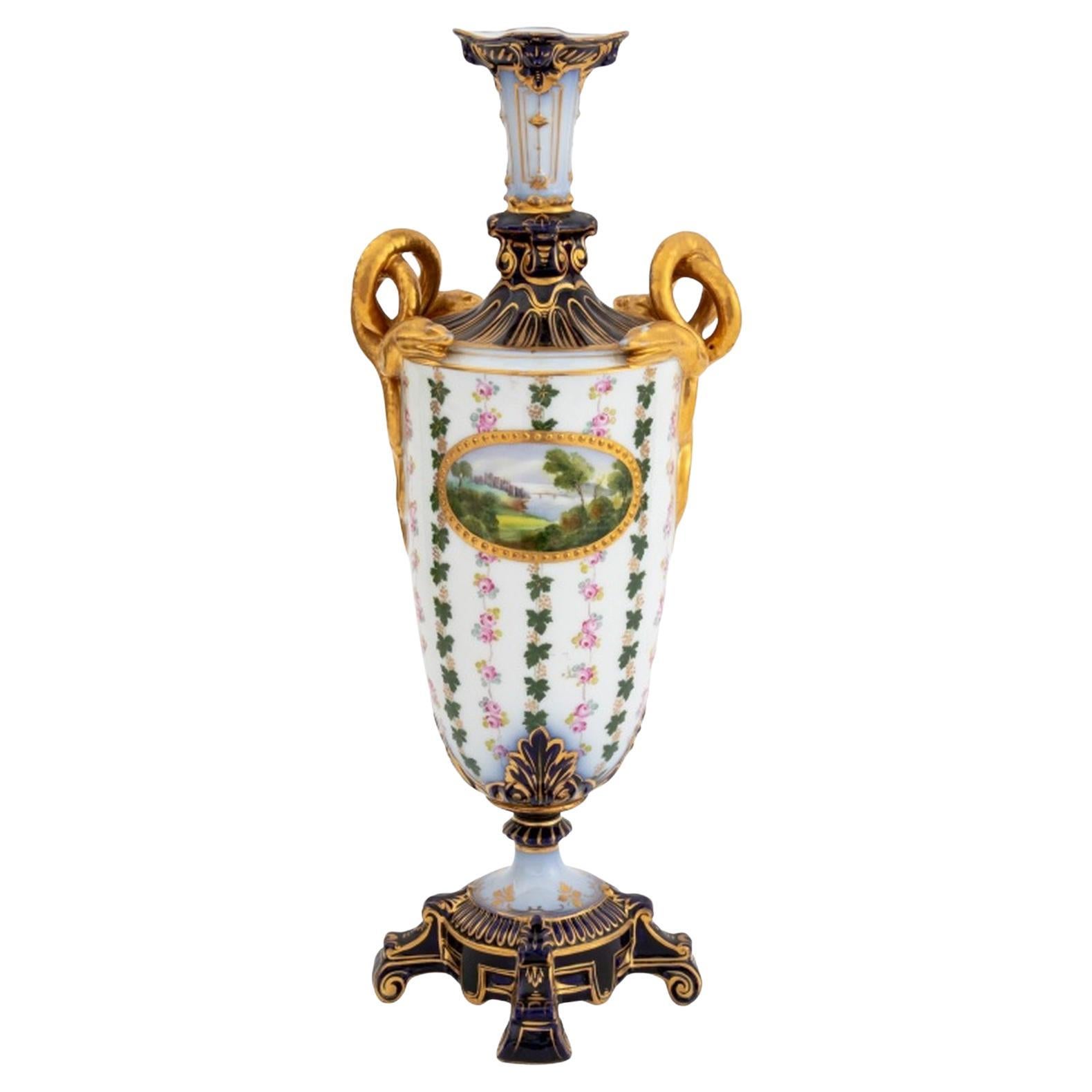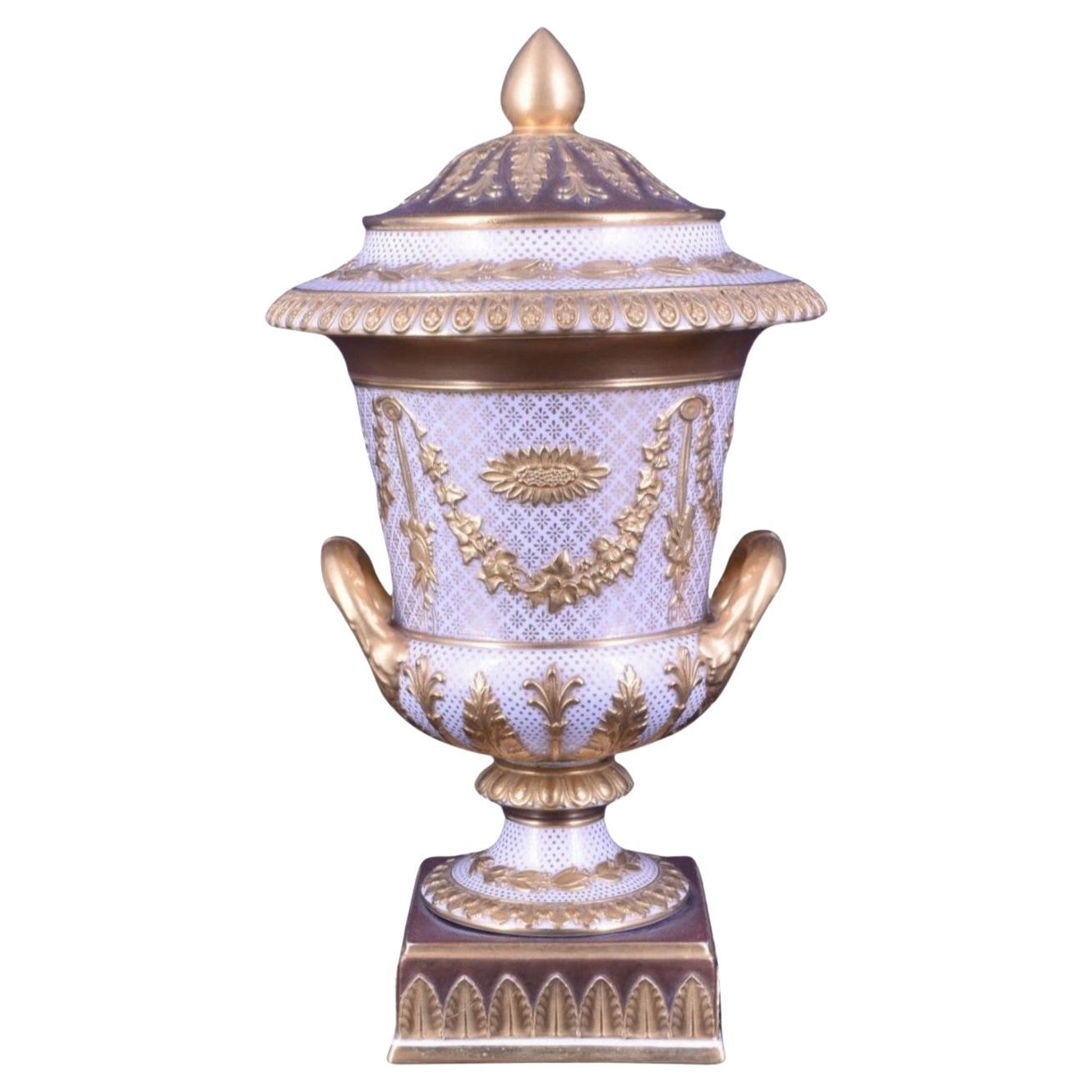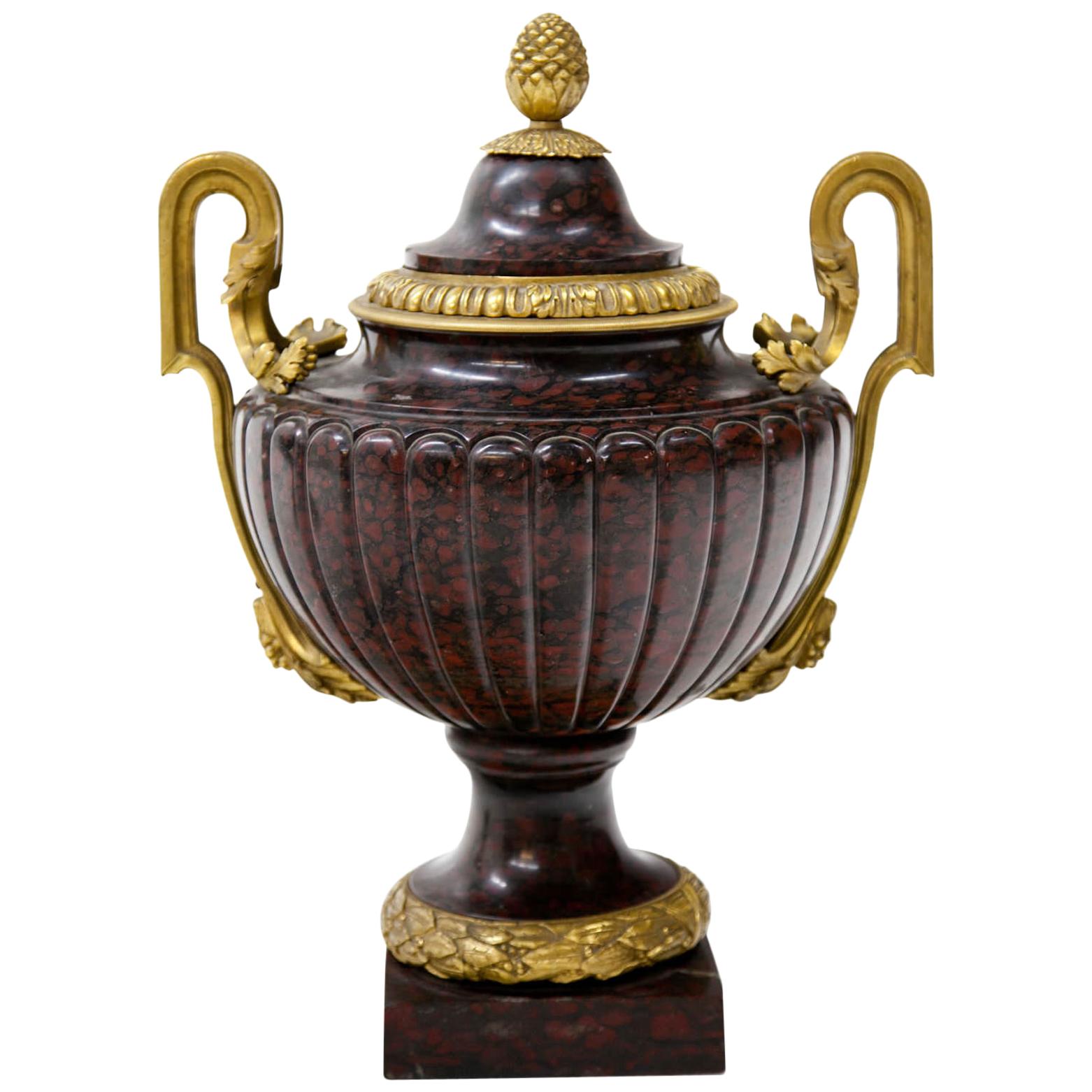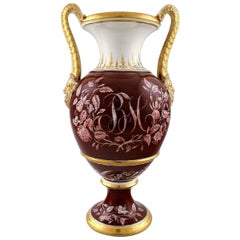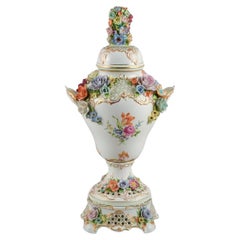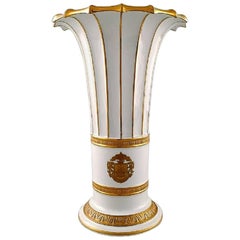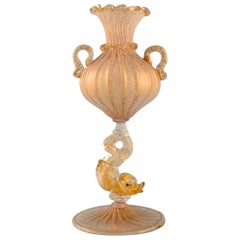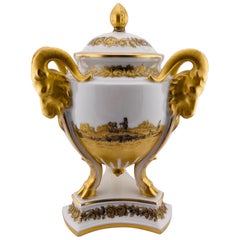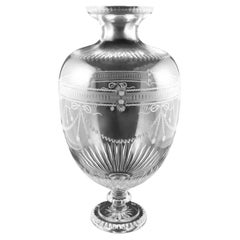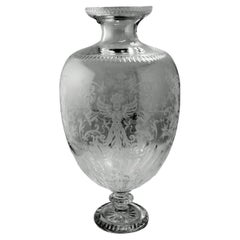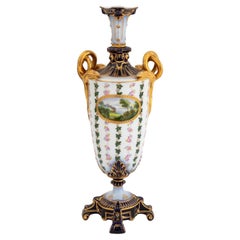Items Similar to Sensational B&G 'Bing & Grondahl' Large Egg Shaped Vase in Empire Style
Want more images or videos?
Request additional images or videos from the seller
1 of 9
Sensational B&G 'Bing & Grondahl' Large Egg Shaped Vase in Empire Style
$1,200
$1,50020% Off
£906.77
£1,133.4620% Off
€1,049.51
€1,311.8820% Off
CA$1,683.54
CA$2,104.4320% Off
A$1,872.58
A$2,340.7320% Off
CHF 982.35
CHF 1,227.9420% Off
MX$22,849.74
MX$28,562.1720% Off
NOK 12,329.77
NOK 15,412.2120% Off
SEK 11,619.31
SEK 14,524.1420% Off
DKK 7,834.13
DKK 9,792.6620% Off
About the Item
Sensational B&G (Bing & Grondahl) large egg shaped vase in Empire style on stand. Lid with mythological figures in biscuit. Decorated with the Stock Exchange and the French Embassy in Copenhagen.
Measures: 38 cm.
In perfect condition, factory first.
- Dimensions:Height: 14.97 in (38 cm)Diameter: 7.09 in (18 cm)
- Style:Empire (In the Style Of)
- Place of Origin:
- Period:
- Date of Manufacture:20th Century
- Condition:In perfect condition.
- Seller Location:København, DK
- Reference Number:1stDibs: LU104121186034
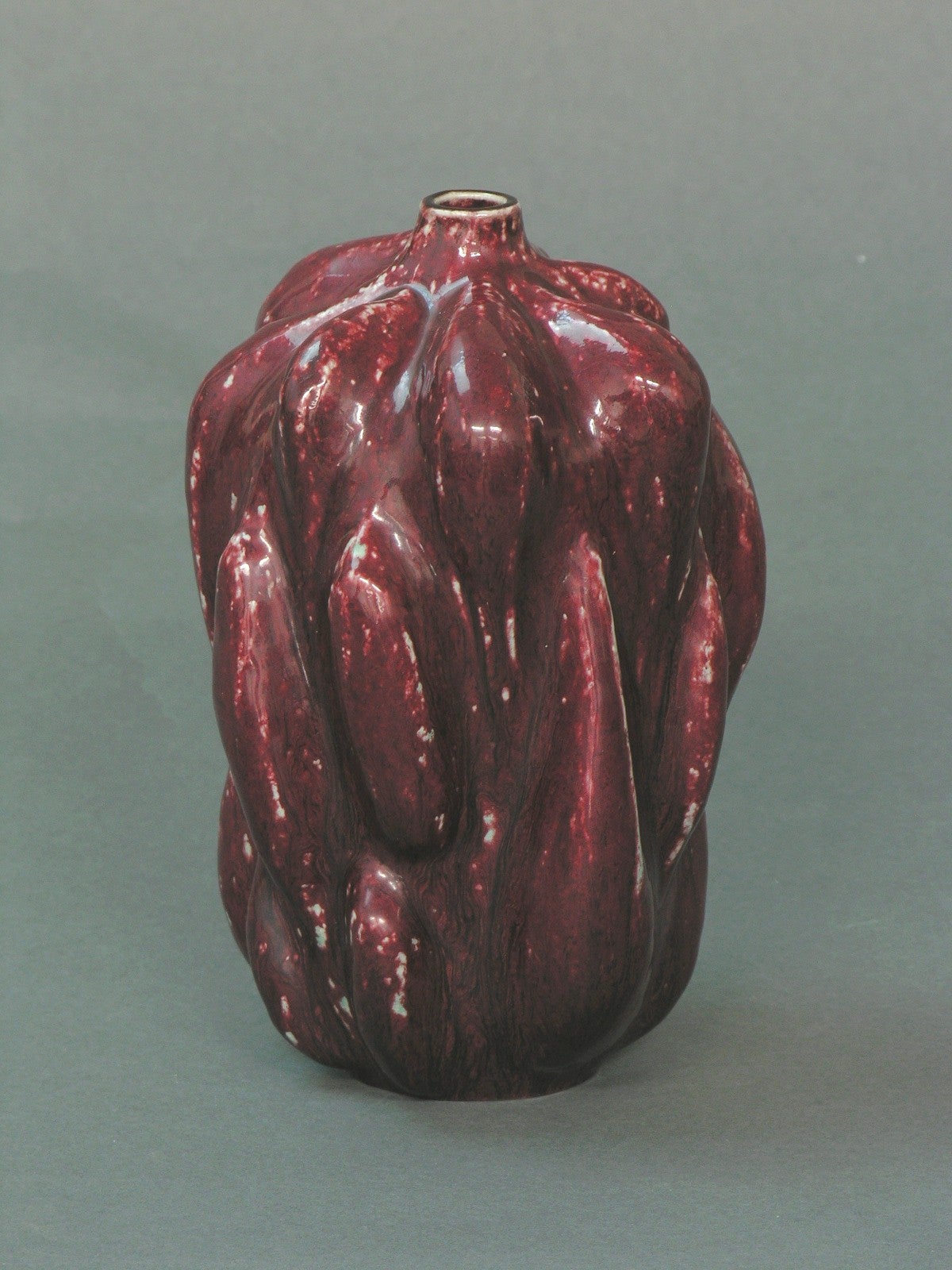
About the Seller
4.8
Platinum Seller
Premium sellers with a 4.7+ rating and 24-hour response times
Established in 1999
1stDibs seller since 2014
3,095 sales on 1stDibs
Typical response time: 7 hours
- ShippingRetrieving quote...Shipping from: København, Denmark
- Return Policy
Authenticity Guarantee
In the unlikely event there’s an issue with an item’s authenticity, contact us within 1 year for a full refund. DetailsMoney-Back Guarantee
If your item is not as described, is damaged in transit, or does not arrive, contact us within 7 days for a full refund. Details24-Hour Cancellation
You have a 24-hour grace period in which to reconsider your purchase, with no questions asked.Vetted Professional Sellers
Our world-class sellers must adhere to strict standards for service and quality, maintaining the integrity of our listings.Price-Match Guarantee
If you find that a seller listed the same item for a lower price elsewhere, we’ll match it.Trusted Global Delivery
Our best-in-class carrier network provides specialized shipping options worldwide, including custom delivery.More From This Seller
View AllLarge Antique B&G Bing & Grondahl Vase in Purple with Handles in Gold
Located in København, Copenhagen
Large antique B&G Bing & Grondahl vase in purple with handles in gold with faun-face.
Early stamp. Dated 1888, with monogram.
1st. factory quality. In perfect condition...
Category
Antique 1880s Danish Empire Porcelain
$512 Sale Price
20% Off
Dresden, Germany, Colossal Lidded Porcelain Vase on Stand
Located in København, Copenhagen
Dresden, Germany. Colossal lidded porcelain vase on stand.
Impressive vase of high quality. In three parts.
Lavishly decorated with flowers in relief...
Category
Vintage 1920s German Porcelain
Materials
Porcelain
Royal Copenhagen Vase with Gold Decoration, Trumpet-Shaped
Located in København, Copenhagen
Royal Copenhagen vase with gold decoration. Trumpet-shaped.
Measures 26.5 x 17 cm.
Stamped.
1. factory quality, in perfect condition.
Category
Vintage 1950s Danish Neoclassical Porcelain
$448 Sale Price
20% Off
Barovier and Toso, Venice, Rare Organically Shaped Vase in Mouth Blown Art Glass
Located in København, Copenhagen
Barovier and Toso, Venice. Rare organically shaped vase in mouth-blown art glass.
Italian design, mid-20th century.
Measures: 19 x 8.5 cm
In excellent condition.
Category
Mid-20th Century Italian Vases
Materials
Art Glass
Royal Copenhagen, Antique Baluster Shaped Porcelain Lidded Vase, 19th Century
Located in København, Copenhagen
Royal Copenhagen. Antique baluster shaped porcelain lidded vase. Hand painted in colors with flowers.
Knob in the form of rocaille and handle in the ...
Category
Antique 19th Century Danish Victorian Porcelain
Materials
Porcelain
Large Dresden Ornamental Vase in Hand Painted Porcelain with Classicist Scenes
Located in København, Copenhagen
Large Dresden ornamental vase in hand painted porcelain with classicist scenes and handles in the shape of winged female figures.
19th century.
Measures: 42.5 x 24 cm.
In excellen...
Category
Antique 19th Century German Neoclassical Vases
Materials
Porcelain
You May Also Like
Rare Vintage Rosenthal-Vase mit Lid, Capricorn hisorism
Located in Berlin, DE
Rare large Rosenthal lidded vase, Capricorn Historicism
Onion-shaped body with three ibexes, each with ibex feet, standing on a profiled base. Extensive panoramic gold painting. Ver...
Category
20th Century Urns
Materials
Porcelain
$1,351 Sale Price
20% Off
Neoclassical Style Large Italian Crystal Vase with 18th Century Engravings
Located in Prato, Tuscany
Before describing the object under consideration, we must make an important clarification; the artifact, one of many that we will publish over time, is part of the museum collection of a historic Florentine crystal grinder that unfortunately closed recently. It is the Marcello Galgani & Son company, whose completely manual and artisanal work has not withstood the disproportionate advance of mass-produced mechanical processes! Marcello Galgani began his craft as a grinder and restorer in 1960; as the years went by, Marcello mastered and became familiar with particular techniques and shapes, resulting in the production of objects that manage to retain the freshness of grinding and engraving, the warmth and softness of light, and the inimitable flavor of unique artifacts. After several years, his son Lorenzo, who grew up among crystals, also entered the business and immediately became passionate about this ancient craft with skill and ability. Stimulated by the aesthetic sense of the past, father and son, set up a workshop in which the shapes they researched and created themselves are mouth-blown by traditional Tuscan glassmakers in Empoli, then ground and engraved using ancient sixteenth-century techniques, with motifs born from the Galgani's inexhaustible imagination or culturally inspired by designs of objects seen and studied in Florentine museums (Uffizi, Galleria Palatina, Museo degli Argenti, etc.). Marcello and Lorenzo Galgani were also Masters in the difficult art of restoration, bringing rare and precious objects back to life. As mentioned the company recently closed and disposed of all its last production, and only Marcello's old private museum collection remained, which includes unique and special objects created over time, a collection that the craftsman made available to us for a planned sale. All of the objects were made entirely by hand with old grinding wheels, but there were mainly two tools that allowed the creation of masterpieces: the right hand and the left hand of the master craftsman. Ancient glassmaking techniques were used for all the ground and engraved products: first, the object was ground with an emery wheel fed continuously by a jet of abrasive sand and water, then re-polished with a very fine-grained sandstone wheel also fed with water; the engravings were done freehand using as many as 10-15 small stone wheels for each design (flowers, branches, animals, etc. ); then the object was polished and shined; we must make, at this point, an important clarification on these last two operations: towards the end of the 1960s acid crystal polishing was devised, the object was immersed and rotated in a solution of sulfuric acid, fluoridic acid and water and in a short time all the defects left by the previous processes were eliminated, it was a fast, industrial operation that allowed to lower costs considerably, with discrete but not excellent results. But for Galgani's products polishing is done with a cork bark wheel wet with water and pumice, to make the surfaces more transparent, and finally polishing was achieved with a felt wheel wet with a paste of water, iron oxide, and cerium oxide. This series of processes takes an average of two days of work( sometimes much longer) for each object, each engraving or grinding is the result of the creative inventiveness of the two artisans, inventiveness that transforms crystal into reality material of the highest aesthetic value and inestimable value. All the items in the entire collection have never been used; they were part of the exhibition. Large crystal vase with base; the decorations, graceful and delicate, are in Neoclassical style. The object is "one-of-a-kind" signed by the Master; it was created in Marcello Galgani's workshop in 1981 and made with the techniques (grinding, engraving, and polishing) we explained in the description; for the shape, the Master was inspired by a vase found in a painting, preserved in the Uffizi Gallery in Florence by the 16th-century painter Jacopo Ligozzi...
Category
Late 20th Century Italian Neoclassical Vases
Materials
Crystal
Baroque Style Large Italian Crystal Vase With Grotesque Engravings
Located in Prato, Tuscany
Before describing the object under consideration, we must make an important clarification; the artifact, one of many that we will publish over time, is part of the museum collection of a historic Florentine crystal grinder that unfortunately closed recently. It is the Marcello Galgani & Son company, whose completely manual and artisanal work has not withstood the disproportionate advance of mass-produced mechanical processes! Marcello Galgani began his craft as a grinder and restorer in 1960; as the years went by, Marcello mastered and became familiar with particular techniques and shapes, resulting in the production of objects that manage to retain the freshness of grinding and engraving, the warmth and softness of light, and the inimitable flavor of unique artifacts. After several years, his son Lorenzo, who grew up among crystals, also entered the business and immediately became passionate about this ancient craft with skill and ability. Stimulated by the aesthetic sense of the past, father and son, set up a workshop in which the shapes they researched and created themselves are mouth-blown by traditional Tuscan glassmakers in Empoli, then ground and engraved using ancient sixteenth-century techniques, with motifs born from the Galgani's inexhaustible imagination or culturally inspired by designs of objects seen and studied in Florentine museums (Uffizi, Galleria Palatina, Museo degli Argenti, etc.). Marcello and Lorenzo Galgani were also Masters in the difficult art of restoration, bringing rare and precious objects back to life. As mentioned the company recently closed and disposed of all its last production, and only Marcello's old private museum collection remained, which includes unique and special objects created over time, a collection that the craftsman made available to us for a planned sale. All of the objects were made entirely by hand with old grinding wheels, but there were mainly two tools that allowed the creation of masterpieces: the right hand and the left hand of the master craftsman. Ancient glassmaking techniques were used for all the ground and engraved products: first, the object was ground with an emery wheel fed continuously by a jet of abrasive sand and water, then re-polished with a very fine-grained sandstone wheel also fed with water; the engravings were done freehand using as many as 10-15 small stone wheels for each design (flowers, branches, animals, etc. ); then the object was polished and shined; we must make, at this point, an important clarification on these last two operations: towards the end of the 1960s acid crystal polishing was devised, the object was immersed and rotated in a solution of sulfuric acid, fluoridic acid and water and in a short time all the defects left by the previous processes were eliminated, it was a fast, industrial operation that allowed to lower costs considerably, with discrete but not excellent results. But for Galgani's products polishing is done with a cork bark wheel wet with water and pumice, to make the surfaces more transparent, and finally polishing was achieved with a felt wheel wet with a paste of water, iron oxide, and cerium oxide. This series of processes takes an average of two days of work( sometimes much longer) for each object, each engraving or grinding is the result of the creative inventiveness of the two artisans, inventiveness that transforms crystal into reality material of the highest aesthetic value and inestimable value. All the items in the entire collection have never been used; they were part of the exhibition. Large crystal vase; the decorations, in baroque style represent a series of "grotesques" The object is "a unique piece" signed by the Master, it was created in Marcello Galgani's workshop in 1983 and made with the techniques (grinding, engraving and polishing) that we explained in the description; for the shape, the Master was inspired by a vase present in a painting, preserved in the Uffizi Gallery in Florence by the sixteenth-century painter Jacopo Ligozzi...
Category
Late 20th Century Italian Baroque Vases
Materials
Crystal
German Porcelain Two Handle Vase
Located in Astoria, NY
German Porcelain Two Handle Vase, late 19th century, with snake entwined handles, oval painted landscape panel, signed illegibly "A. Schu... (?)", with bands of roses and grape vine,...
Category
Antique Late 19th Century German Neoclassical Vases
Materials
Porcelain
Campana Vase, Victoriaware Wedgwood, circa 1880
By Wedgwood
Located in Melbourne, Victoria
A campana vase in white & gilt Victoriaware. Very French in style, the decoration being a copy of Sevres. It works surprisingly well on the neoclassical shape.
Category
Antique Mid-19th Century English Neoclassical Pottery
Materials
Stoneware
Marble Vase, France, Second Half of the 19th Century
Located in Greding, DE
Large lidded vase with a gadrooned wall with acanthus leaves and pine node. Marbre griotte and gilt bronze.
Category
Antique Late 19th Century French Empire Vases
Materials
Griotte Marble, Bronze
More Ways To Browse
Large Glass Egg
Egg Shaped Glass
Porcelain Eggs
Glass Egg Vase
Vintage Copenhagen Lids
B And G Denmark Porcelain
Porcelain Egg Shaped Vase
Bing And Grondahl Empire
Japanese Blue Porcelain Plates
19th Century Cup And Saucer
Antique Coffee Cups
Blue Glass And Silver Baskets
Kpm Antique
Antique Porcelain Wall Plates
Green Painted Rococo
Cobalt Red Glass
Chinese Silver Dragon
Blue And White Tray
